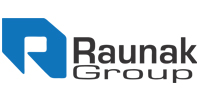Continuous house sales enhance developers’ liquidity and credit standing.
Since the Covid-19 pandemic’s onset, the liquidity and credit profiles of important listed real estate developers have significantly improved as a result of the sustained sales momentum in the home property market over the past three fiscal years.
Both the collections and realisations of these enterprises have increased as a result of the booming residential demand in the mid, premium, and luxury categories across India’s key real estate cities, including Mumbai, Delhi-NCR, Bangalore, Pune, Kolkata, and Hyderabad.
Their credit and leverage profiles were strengthened as a result of the performance, which is anticipated to continue over the medium term.
Despite the fact that major developers used funds for land purchases during the previous fiscal year, the liquidity profile for 11 listed developers—including cash and bank balances—rose to approximately Rs 13,000–14,000 crore in 2022–23 from Rs 9,046 crore in 2019. This is according to Gautam Shahi, director of CRISIL Ratings.
In terms of value, the top 11 significant and publicly traded real estate developers saw a rise in sales of over 50% from year to year in 2022–2023 while the area sold increased by almost 20%. These developers’ greater realisation per sq ft indicates the preference for larger and more luxurious homes.
“Due to the underlying economic expansion, the property market has experienced strong sales momentum in recent years. Consistent sales, increased conversion rates, and realisations have all contributed to an improvement in liquidity, enabling greater economic activity and velocity. Homebuyers will benefit as a result of better execution and prompt delivery, according to Savvy Group CMD Jaxay Shah.
Since the start of the pandemic in 2019–20, it is estimated that the gross debt of 11 listed large residential real estate developers, including Brigade Enterprises, DLF, Godrej Properties, Kolte-Patil Developers, Macrotech Developers, Mahindra Lifespace, Oberoi Realty, Prestige Estates, Puravankara, Sunteck Realty, and Sobha, has decreased by more than 42%.
In this time, these enterprises had paid back debt of Rs 18,000–20,000 crore, and as of March 2023, their combined net debt had decreased by more than 50%, to Rs 20,500 crore from Rs 44,780 crore.
He claims that the demand surge is anticipated to continue because inventory is at reasonable levels, typically around three years’ worth of sales, down from around 4.5 years prior to the epidemic. As a result, developers are in a better position and have more faith that fresh releases will be taken up in line with rising demand.
The debt to total assets ratio for the listed developers is anticipated to drop to 20% by March 2024 from an initial estimate of 45% due to strong collections that resulted in reduced debt. Small and midsize developers’ credit metrics have also improved, with the debt-to-total asset ratio predicted to be 45–47% by March 2024 as opposed to 54% before to the pandemic.
To benefit from the latter’s execution abilities, strong balance sheets, and reputation for quality commensurate with the brand image, larger developers may need to partner with these players for new launches because they rely more heavily on debt and may need to do so.
Due to ongoing strong sales and collections from their ongoing projects, easier access to bank financing and capital markets, and growing consumer preference for reputable and well-known brands, the large developers are poised to increase market share to close to 30% this fiscal from 16–17% in fiscal 2020.




















































































